Urea for cabbage: description and application
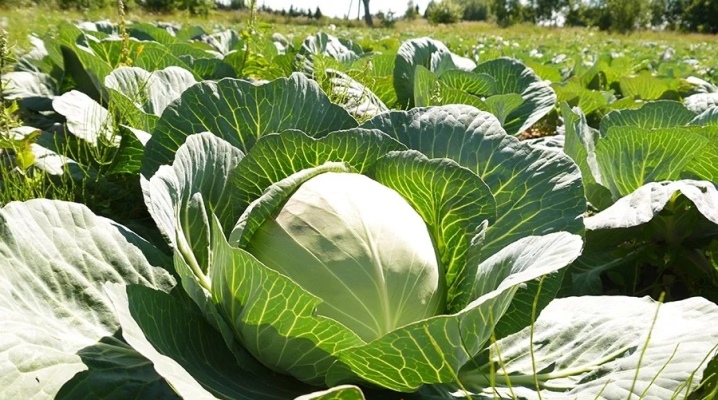
Cabbage is one of the most common vegetable crops, which is cultivated by almost all summer residents and gardeners. To grow juicy, dense and tasty heads of cabbage, the plant must be provided with adequate nutrition. One of the mandatory procedures for obtaining a good harvest is urea fertilization.
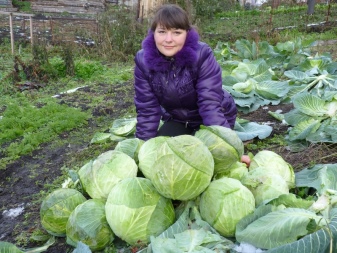
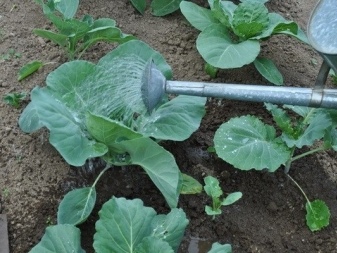
Description
The second name for urea is carbamide. The powder is 46% nitrogen, therefore it is a highly concentrated nitrogen fertilizer. The drug has a neutral odor and dissolves quickly in water. Sold in the form of granules. It has a low price, and you can buy it in any specialty store.
Using this fertilizer has its pros and cons. Benefits include:
- stimulating the growth of green mass;
- prevention of the appearance of pests;
- ease of assimilation by vegetable crops;
- the ability to use at any stage of the growing season;
- performance on all types of soils;
- application in dry and liquid form.
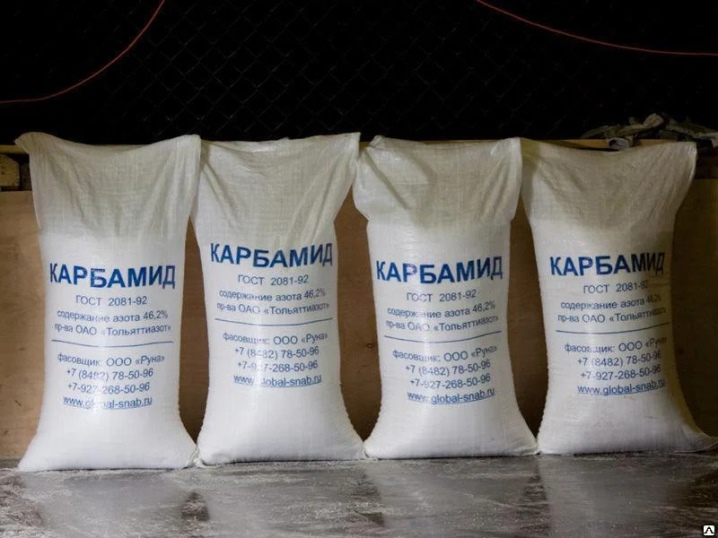
There are also disadvantages:
- inadmissibility of combination with solutions of similar action;
- slow accumulation in soil;
- inadmissibility of exceeding dosages when applying dressings;
- the need for careful storage in a tightly closed container.
However, with the correct use of urea, there will be much more advantages from its use than disadvantages.
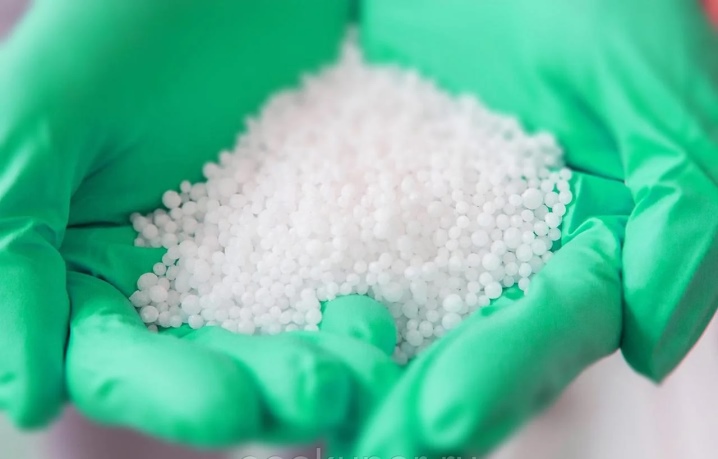
How does it affect the plant?
Urea works in a complex manner. It has a beneficial effect both on the cabbage itself and on the soil in which it grows. For vegetables, urea becomes a source of nitrogen, the drug saturates the root system with micronutrients, improves the growth and development of green mass. The working components of urea accelerate the formation of heads, improve their quality and, in general, contribute to an increase in yield. In other words, nitrogen is the growth engine of any plant.
Correctly carried out top dressing forms phytoimmunity and provides effective protection against aphids, stem weevils and some other pests. Thanks to nitrogen, cabbage leaves acquire a rich color and shine, become juicy, tasty and aromatic.
After treatment with urea, the soil is enriched. Such a substrate provides the cabbage with adequate nutrition and gives the roots the trace elements necessary for its growth and development. However, with an excess of nitrates, their accumulation in the tissues of the plant is possible - such vegetables cannot be used for food, since they can cause poisoning.
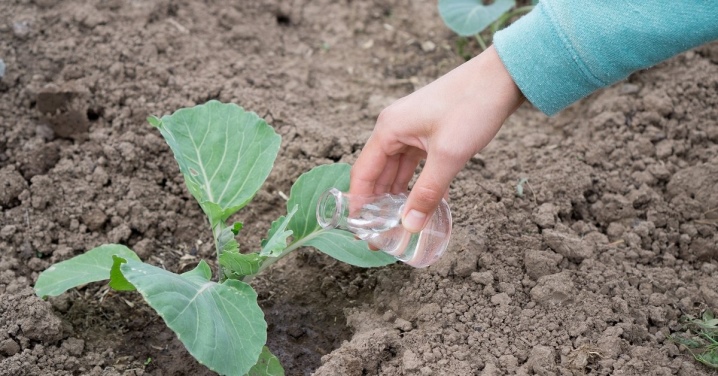
How to prepare the solution?
Urea can be used dry or diluted with water for spraying and irrigation. In the first case, the granules are buried in the soil around the bush and in the aisles. In this state of aggregation, the substance will remain in the soil for a long time, dissolving as water flows and having the most beneficial effect on the root system.
However, most often summer residents prepare a liquid make-up at the rate of 100 g of carbamide per 10 liters of water. For foliar treatment, only 50 g of the drug is needed for the same volume of liquid. The consumption rate of the working solution directly depends on the growing season:
- to enrich the substrate before planting seedlings - for one square meter of planting, you will need 5 liters of solution or 50 g of granular substance;
- for root feeding, 0.5-1 l of the finished solution is poured under each bush;
- when carrying out foliar feeding, 500 ml of urea solution is consumed per adult plant.
The very first feeding of cabbage plants is carried out by combining urea with other useful substances. To achieve the maximum effect, 15 g of urea, 10 g of any potassium fertilizer and 20 g of superphosphate are dissolved in 10 liters of water.
This mixture helps vegetables to adapt and grow quickly.

Application methods
Once in the ground, urea immediately begins to interact with microorganisms and enzymes present in the substrate. After 2-3 days, a reaction begins, during which urea is converted into ammonium carbonate. In air, the latter is transformed into ammonia and evaporates quickly. Therefore, if the drug is simply scattered over the surface of the earth, then a large proportion of fertilizers will simply be lost. And if the earth has an alkaline or neutral reaction, then the loss of the working substance can be very significant.
In this case, the effect of using urea will be subtle. To increase the efficiency of fertilizer, the granules of the preparation should be deepened by at least 4-8 cm. Many summer residents believe that it will be more effective to feed the cabbage with liquid urea solutions.
Important: before feeding, the cabbage bed must be watered abundantly. If nitrogen comes into contact with heated dry ground, it will release hazardous substances.
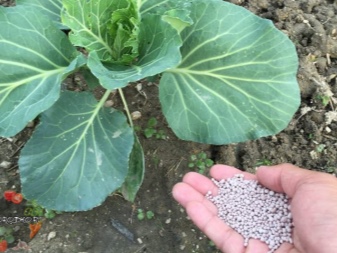

Urea can be added to the planting holes. To do this, 3-5 g of dry granules are poured into each hole and sprinkled with soil, otherwise the fragile roots may be damaged. It is best to carry out this procedure in the evening, on the eve of planting seedlings in open ground.
The most effective and convenient way to use urea is by root spraying, which is affordable and simple. All that is needed from the gardener is to prepare a working solution, stir thoroughly and process the bush. You need to water the cabbage under the very base of the bush. The dose of the agent used depends on the stage of plant development and the severity of nitrogen deficiency.
When the ovaries are shedding, foliar treatments are shown to the plants. They involve spraying the bush with a weakly concentrated urea solution. To compile it, 5 g of the product must be diluted in 1 liter of water - this amount is enough for spraying 20 sq. m of cabbage plantation. Special attention should be paid to the bottom sheets and the base, in no case should they be rubbed and moistened in the ready-made solution.
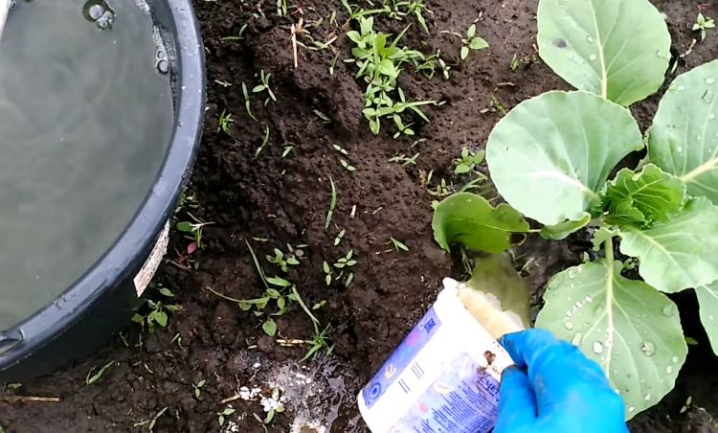
Spraying the cabbage bush should be done in cloudy but dry weather or in the evening, shortly before sunset. If you process the bush on a hot sunny day, then the solution will quickly evaporate and will not have time to be absorbed into the cells, and in addition, it can cause burns to delicate tissues.
By the way, for early ripening of the crop, urea dressings can be applied already at the seedling stage. To do this, make weekly feeding of the plant, alternating urea, potassium nitrate and potassium monophosphate. This speeds up the development of culture, and subsequently facilitates adaptation in the open field.
Urea is a nutritious fertilizer, it must certainly be present in the arsenal of every summer resident. It allows you to maintain the cabbage during growth, head formation and fruiting.
In addition, urea effectively eliminates many other problems that often arise in the process of growing a vegetable crop.
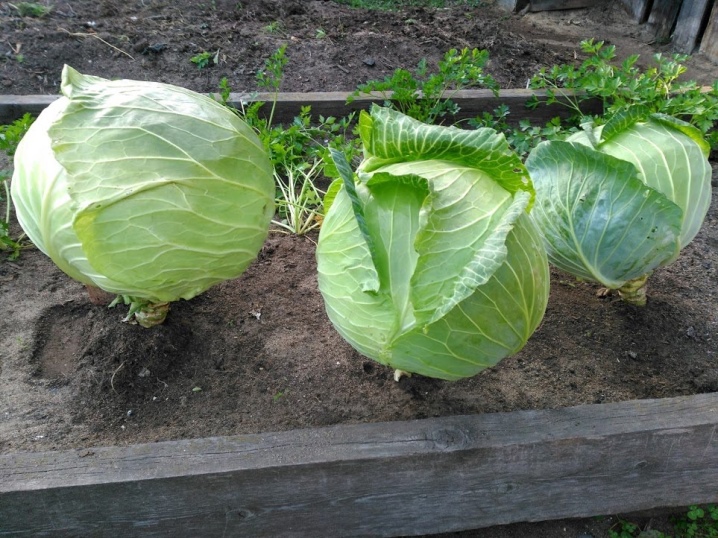








The comment was sent successfully.